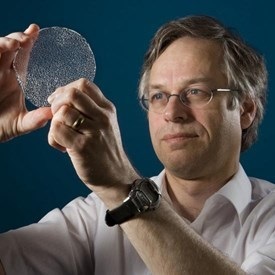Guest Editor, Dr Yasmin Andrew, introduces us to her Philosophical Transactions A theme issue which explores the future challenges and prospects for magnetic fusion.

There has been a great deal of exciting fusion energy news over the last twelve months with research breakthroughs using both magnetic and inertial confinement approaches. For instance, on the 9th February 2022, the Joint European Torus announced that it had achieved a record performance for sustained fusion energy of 59 MJ over five seconds. In September 2022, the Korea Superconducting Tokamak Advanced Research (KSTAR) experiment published an article detailing it had achieved plasma temperatures of 120 million kelvin for up to twenty seconds, an important demonstration of simultaneous high temperatures and plasma stability. On the other hand, the US Department of Energy announced the achievement of fusion ignition at Lawrence Livermore National Laboratory during experiments carried out on the National Ignition facility on the 5th December 2022. The laser shot released 3.15 MJ of energy compared with the 2.05 MJ delivered to the hydrogen isotope pellet by lasers.
The fusion energy research landscape has been changing rapidly over the last decade, with significant investment in private fusion research taking place across the world for the first time, and impressive technological advances in areas such as high temperature superconducting magnets. The combination of significant technological progress, enhanced computational resources, accumulation of specialised scientific knowledge, and an exciting range of viable experimental approaches and varied funding sources, means that the path to fusion power as a sustainable and clean energy source looks bright. Magnetic confinement is one of the most promising approaches to fusion power as a virtually unlimited, global energy source, potentially contributing to society’s transition to de-carbonised energy, while ensuring security of supply. It is therefore timely for the latest issue of Philosophical Transactions A to be published on the 'H-mode Transition and Pedestal in Studies Fusion Plasmas'.
The plasma high confinement mode, or H-mode, is a plasma state which is stable and better confined than the low confinement operation phase, L-mode. It was first discovered in 1982 on the ASDEX tokamak by Friedrich Wagner and the ASDEX team. Since then, the H-mode has been accessed in all major tokamak and stellarator experiments. The H-mode is characterised by the formation of a thin insulating layer of plasma or pedestal in the outer edge region of the confined plasma. Turbulence has been observed to be suppressed in the pedestal region by sheared plasma flow, which results in reduced turbulent transport of particles and thermal energy to the vessel walls. This high confinement mode of operation is accompanied by some downsides, however, including higher levels of impurity accumulation and edge localised modes (ELMs). ELMs are regular, intermittent relaxations of the pedestal pressure gradient, which have the potential to melt the machine walls on future larger and higher energy magnetic confinement devices. Many H-mode and pedestal questions remain unanswered, and the topic continues to be one of the most active areas of research in the magnetic confinement fusion community.
This Philosophical Transactions A theme issue brings together various physics aspects of low and high confinement investigation, providing the opportunity to highlight and compare research across conventional and spherical tokamaks, and stellarator machines. The issue includes review and discussion papers, along with research articles presenting new results; offering the opportunity to map out recent advances in L- and H-mode experimental approaches and methodology, data analysis, emergent questions, and current critical knowledge gaps. It aims to facilitate the exchange and co-operation of specialist confinement phase physics knowledge and provide further opportunity for cross-machine experimental and theoretical discussion.
It has been a fantastic experience to work with the specialist editorial team at Philosophical Transactions A; commissioning Editor, Alice Power, and her team provided expert guidance and help throughout the editing process. I would also like to thank all the researchers and reviewers on behalf of myself and Prof. Eun-jin Kim, for their esteemed contribution to the issue publication.
About the Guest Editors
Prof Eun-jin Kim is a Professor in Physics and Applied Mathematics at Coventry University, UK. She obtained her PhD in Physics from the University of Chicago, USA and held Assistant and Associate Professor positions at the University of Sheffield, UK. She was awarded the Leverhulme Trust Research Fellowship and has published over 140 refereed journal papers.

Dr. Yasmin Andrew is a plasma physicist at Imperial College London and a Fellow of the Institute of Physics. She obtained her PhD in Physics from Imperial College London and has worked on a range of topics in magnetically confined fusion research for the past twenty five years. Yasmin is currently a collaborator on the JET, MAST-U, ST40 and DIII-D tokamaks, focussing on the area of H-mode and pedestal physics.

To read more content from Philosophical Transactions A, or to find out how you can become a Guest Editor for the journal, please visit our website.
_____________________________________________________________________
Further reading:
[1] F. Wagner, ‘A quarter-century of H-mode studies’ 2007, Plasma Phys. Control. Fusion 49 B1
[2] B. Bigot. ‘Preparation for assembly and commissioning of ITER’ 2022, Nuclear Fusion 62 04001
[3] G. Federici, C. Bachman, L. Barucca, W. Biel, et al., DEMO design activity in Europe: Progress and updates, Fusion Engineering and Design 136 A, 729 (2018).
[4] Spherical Tokamak for Energy Production (STEP), https://step.ukaea.uk
[5] Fusion demonstrator proposed by Tokamak Energy, https://www.world-nuclear-news.org/Articles/Fusion-demonstrator-proposed-by-Tokamak-Energy
[6] ‘H-mode: This discovery made ITER possible’ https://www.ipp.mpg.de/5280411/05_22?c=14226



